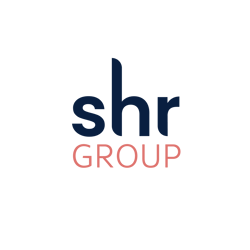Contributed by Estella Hale, V.P. of Product, SHR
Most hoteliers already know that in today’s increasingly competitive market, the guest experience has never been more important, and the research backs this up. According to a recent Gallup study, fully-engaged guests, those who identified most strongly with the hotel, spent $588 per visit compared with $403 per visit for actively-disengaged guests, those who did not identify at all—a difference of $185 per guest. But, only one in five guests on average are fully engaged. This holds particularly true for Generation X (22%) and Millennials (20%). Even Baby Boomers didn’t fare much better, at only 25%. So, how do you engage your guests at every stage of the guest journey, and do it consistently?In a recent webinar Hayet Adhanom, Sales Director for StayNTouch, Thomas Landen, Director of Global Field Marketing for Revinate, and I explored this question, and came up with some practical know-how and strategies for truly “owning” the guest experience at all stages of their journey. The following are some highlights of this discussion.
Before the Stay—Planning and Booking
The first stages of the guest journey include planning and booking, which means hotels need to grab and hold the attention of the guest early on. We discussed how the power of persuasive messaging in your online presence can help since the goal is to get guests to convert in that “moment.” Hotels need the ability to craft messaging and choose verbiage that suits the target guest audience. Things like strike-through effects, a third-party booking method of spelling out value for the guest as they shop, can be extremely helpful in converting more lookers into bookers. Also, the ability of your technology to provide blended rates can save your guests from having to see the dreaded “non-available” message, helping to curb booking abandonment.
Responsive design can help you address cross-context reservations for any device, from desktop, to smartphone, to tablet. And with more and more mobile booking happening every day, this type of becomes more important. And since conversion can happen on multiple devices, Estella reminded everyone to make sure your content looks good on all devices.
And with multiple devices being used more and more for booking, customized website branding is a must-have for your booking engine technology. Also, navigation should blend into your site, creating a seamless, non-jarring booking experience. No one wants to be “redirected” out of a site they’ve come to know and trust, so make sure your booking engine shares most the same visual aspects of your hotel website.
During the Stay—The Experience
Allowing the guest to be in control means listening to them and doing your best to give them what they really want. Hayet cited the Harvard Review, which reported that customers who had the “best experience” spent 140% more compared to those who had poor experiences. But what does “best” mean?
One particularly important guest delight indicator is mobile check-in and check-out, with 84% of guests reporting that they would take advantage of it if they were offered, 60% would be more likely to stay, and 63% simply preferring hotels with tech-enabled lobbies over those without. Considering these numbers just continue to grow, it’s safe to say that mobility has more than arrived—it’s here to stay.
But as usual, it’s more than simply having the right technology. Hayet reminded everyone to personally ask guests for details of what they need during their stay, and keep your staff informed of their requests. Items like estimated arrival time and special requests sound basic but are key to really taking care of them, as much as offering perks like early check-in, late check-out, and room upgrades are.
After the Stay—Sharing the Joy
After a memorable and meaningful visit, you need to keep the momentum going by attending to your guest after the stay, but in non-intrusive ways. Thomas suggested that the best ways to help turn all guests into advocates, and more third-party bookers into direct bookers, revolves around three key areas—gratitude, incentives, and feedback.
The best medium for these three areas? Early in the webinar, our polled audience reported that they use email as their primary communication method (65%) for guests. This is convenient, as Thomas pointed out that well-crafted emails, several examples of which can be seen in the webinar slide deck, are really your best bet for real guest impact. The key send dates for these emails is seven and two days after check out, as these times have been found to yield the highest open and click-through (read through) rates. The most important item in the email by far is the subject line. But what kind of subject lines work, and which don’t?


